The number of people of the Tibetan ancestry is placed at 4,593,330. They mainly live in Tibet Autonomous Region and the neighboring provinces such as Qinghai, Gansu, Sichuan and Yunnan.
Tibet, the roof of the world, is a land of mystery and home to one of China's most ancient ethnic groups - the Tibetans. At present, Tibet Autonomous Region has more than 1.3 million inhabitants, 95% are Tibetans. In the Tibetan language, Tibet is called "Bo" and the Tibetans call themselves "Boba". But the name Tibetans use to call themselves differs from place to place. For example, those in Ngari use "Duiba", those in Shigatse use "Zangba", those in Lhasa use "Weiba", those in the west of Sichuan Province use "Kangba" and those in Qinghai, Yunnan, and northwest Sichuan provinces use "Anduowa".
The ancestors of Tibetans originally lived along the fertile banks of the Yarlung Zangbo River as early as the Qin and Han dynasties. The middle reaches of the river are an extremely rich area for pastoralism. The domestication of the hardy bo?vine creature, the yak, assured considerable wealth for Tibetan husbandmen. For yark can be used as pack animal and is a source of meat and butter. Sheep, goat, and plan niu (offspring of a bull and a female yak) are also important to the economy. Cereal, primarily qingke barley, is Tibet's staple crop and barley flour which is called tsampa forms the basic diet. Other crops are wheat, rape and pea.
The dress used by Tibetans, both men and women, is called chuba, and consists of a full gown with long sleeves that reach far below the Fingertips. The style varies from place to place.
The Tibetan language, containing the Weizang, Kang and Anduo dialects, belongs to the Tibeto-Burmar group of the Sino Tibetan family. The use of the Tibetan language strengthened the economic ties with the Central Plains of China. In 641, the Tibetan king Songzen Gampo married Princess Wen Cheng of the Tang Dynasty. This event brought about an unprecedented development in the Tibetan culture. From the 10th to 16th centuries, Tibetan civilization reached its zenith in the publica?tion of the two voluminous Buddhist encyclopedic works the Kanjur and Tenjur. Moreover, a wealth of treatises in prosody, literature, philosophy, history, geography, astronomy, calendar and medicine came out in this period.
The Tibetans are by nature ebullient, sanguine and bold, so are their folk arts. A very popular art form in Tibet is the dance drama. Dancers move their body with sprightly rhythm singing pleasant lyrics.
Buddhism probably first entered Tibet in the 4th century A.D. from Kashmis and Nepal. It was adopted as the court religion in the 7th century. From the 13th to the mid-16th centuries, Buddhism became popular. Monastic system spreud widely through Tibet. Finally emerging as the predominant religious institute. The most famous monasteries are Gunden, Sera, Drepung, Tashi Lhunpo and the Paula Palace.
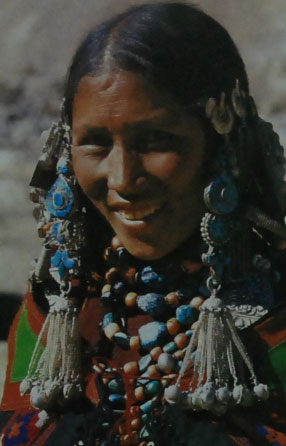
Tibetan women living in Ngari love to wear gems, agate, and emeralds in their plaits and on chest.
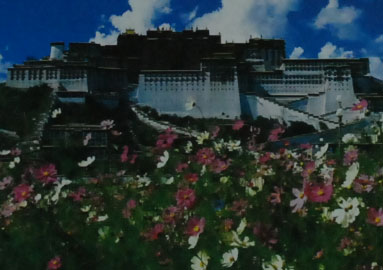
The magnificent Potala Palace on the Red Hill in Lhasa, Tibet.
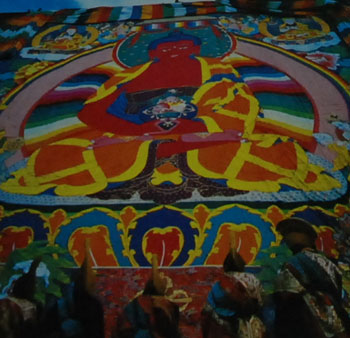
A huge picture of Buddha made of silk.
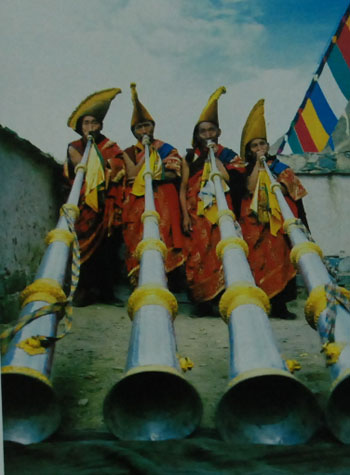
Lamas are blowing the huge Buddhist homs. The Buddhist Worship Festival is started.
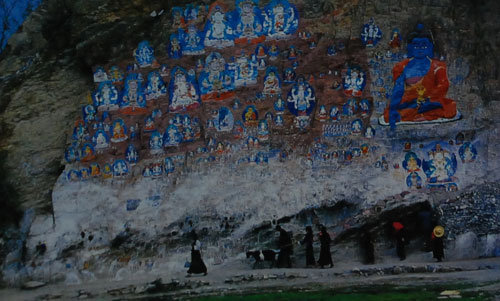
Every early morning, many Buddhists come to worship the figures of Buddha carved on the cliffs of the Yaowang Mountain. Lhasa.
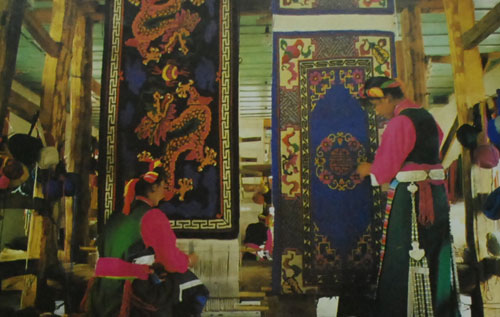
Tibet produces and sells nice hand-made carpets.
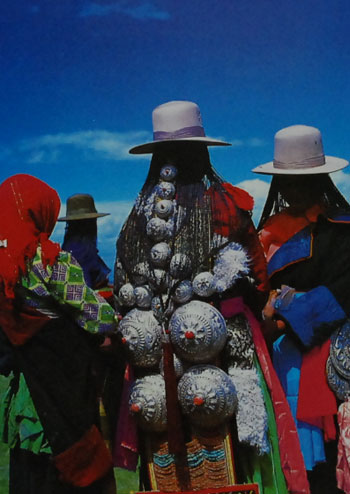
Tietan women living in Yushu of Qinghai Province love to wear silver shields on their back
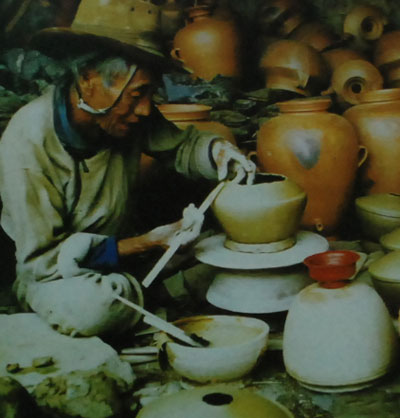
A Tibetan craftsman
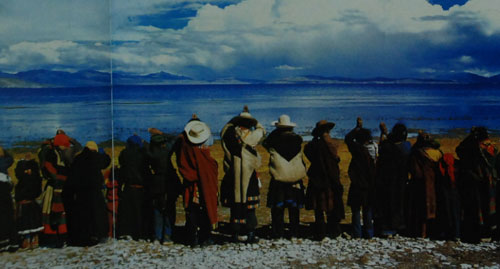
Kang Rimpoche and Mapam Yunco are worshipped as the holy mountain and lake by the Tibetans. Every summer and autumn, a great number of pious Buddhists come to bathe in the lake, then bring the clear water back home and send It as valuable present to their friends and relatives





